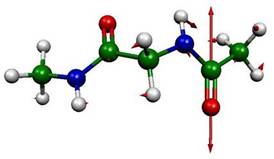Krossing Group Compute Cluster
Methods IAAC, Krossing
| Krossing Group Compute Cluster | Model: | Dalco Computing Opteron Nodes Deltacomputer Xeon Nodes |
| Unit and Room: | Rechenzentrum der Albert-Ludwigs-Universität Freiburg, Maschinenraum | |
| Responsible: | Dr. Anke Schaub | |
| Quantum Chemistry | Further information: | |
| Short Description: Linux-based compute cluster with 7 Opteron nodes (2 cpu cores & 8 GB memory each) and 3 Xeon nodes (8 cpu cores & 16 GB memory each).. | Picture of the Equipment
| |
| Available Experiments/Techniques: DFT, perturbation methods, coupled cluster and other highly correlated methods. Visualization, rendering, structure refinement and mathematical analysis software. | ||
| Special Equipment: Commercial licenses: Turbomole, Gaussian 03, Cosmotherm, Crystal 06 | ||
| Measurements on the equipment are currently done by: | Students after Introduction Students after extensive training Trained scientific service personal | |
| Recent Publications, where this instrument was important (citation): | Chem. Eur. J. 2009, 15, 3426-3434. Angew. Chem. 120, 7914-7917. | |
| Typical problems that may be solved with this instrument: | Quantum chemical calculations: - Geometry optimization - Reaction enthalpies - Prediction of properties - Thermodynamics - Transition state search - Understanding of bonding situations | |
![]() Krossing Group Compute Cluster (this page as a pdf file)
Krossing Group Compute Cluster (this page as a pdf file)


